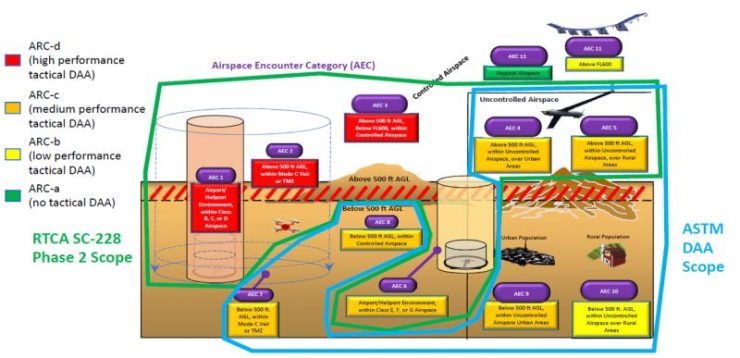Global standards organisation ASTM International and RTCA have announced a collaboration that allows for the joint development of consensus standards for smaller unmanned aircraft systems (sUAS).
The focus of the collaboration is on an aviation system designed to provide detect and avoid (DAA) capability for drones operating beyond visual line of sight (BVLOS). Operational performance requirements and test procedures are being developed jointly for the new system, which is known as ACAS sXu.
According to Walter Bender, Johns Hopkins Applied Physics laboratory, ACAS sXu requirements will be documented in a minimum operational performance standard that will be developed by the RTCA special committee on traffic alert and collision avoidance systems (RTCA SC-147). ACAS sXu is also referenced in ASTM International’s standard detect and avoid system performance requirements (F3442) managed by ASTM’s unmanned aircraft systems committee (F38).
Andy Thurling, CTO of NUAIR and leader of the ASTM task group on DAA notes that F3442 is currently being revised, however the ACAS sXu will maintain alignment with ASTM’s DAA efforts and the system will again be cited as a possible reference implementation in future F3442 revisions.
ASTM International’s F38 committee includes more than 500 members from 25 different countries. The committee oversees 25 standards covering the airworthiness, flight operations, personnel training, qualification, and certification for drones.
RTCA SC-147 was established in 1980 and was the original developer of the TCAS and TCAS II performance standards. Since that time, they have updated those standards to the Aircraft Collision Avoidance System (ACAS). ACAS has multiple variants including ACAS Xo (special operations), ACAS Xa (active surveillance) and the soon to be published ACAS Xu (unmanned aircraft systems).
This cooperative effort is part of ASTM and RTCA’s Memorandum of Understanding to promote cooperation in the development of standards in specific areas of interest to avoid duplication and leverage expertise between both organizations.
For more information visit:




